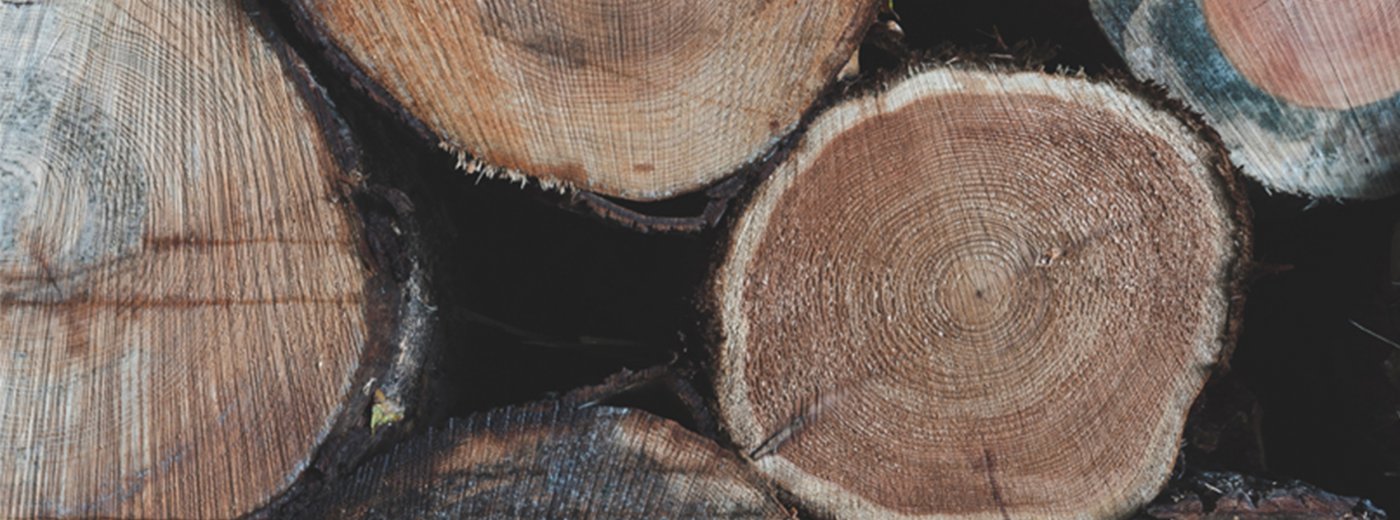1. Use the Right Type of Wood
What most people do not realize is that some woods are not to be used in wood burning stoves. Woods such as pine tend to leave behind too much creosote resulting in fires from the buildup. Other woods such as apple and fruit woods burn well, but maintain a rather small flame. One of the most popular options is oak as it has a beautiful earthy aroma, but the dense nature of this wood makes it somewhat difficult to burn. Among the best woods for a wood burning stove is ash, beech, and hawthorn.
2. Properly Season the Wood
Those new to wood burning stove practices might be under the misconception that they can simply chop down a tree and get the wood they need, but fresh or green wood holds a substantial amount of water resulting in weak heat output.
Seasoning wood is an essential step in ensuring that the heat produced by the stove is optimal. The seasoning process involves stacking wood in a covered, well ventilated area to dry properly. Seasoned wood does burn faster, but with substantially more heat output, so always buy seasoned wood or season it yourself.
3. Have the Unit Inspected
Modern wood burning stoves are a beautiful and safe way to heat any home, but they do need to be serviced annually by a licensed inspection professional. The professional will look for any creosote buildup and that the stove is properly ventilated, among other inspection services. Never skip an inspection.
4. Wood Storage
Whether seasoning wood for use or storing it up for the season, wood should always be stored properly. Wood should always be stored in a covered area away from moisture. It is also recommended that homeowners allow wood to breathe properly. This is easily accomplished by placing wood on a platform that is at least one foot off the floor. This provides a place for the wood to breath, so the bottom pieces do not become smothered by the weight of the wood.
5. Check the Chimney Fires
Your annual inspection is essential, but it is also important to check our chimney regularly between inspections. Birds have been known to nest in chimneys as well as many other small animals. A simple look up the chimney will show any blockages in the pipe. Clear out any creosote at this time as well with a chimney sweep brush or call a professional cleaning service.
6. Prepare the Firebox
It is not good practice to continually add more wood to the fire without properly preparing the firebox. A clean firebox is essential to allowing wood to burn at its optimal level. To prepare the firebox, simply remove all unburned wood pieces and sweep out the rest of the debris into a metal container and discard properly. If sweeping alone is unable to get rid of the debris, a vacuum hose can be placed in the unit to vacuum away the excess.
7. Proper Ventilation
Wood burning stoves cannot be placed everywhere throughout a home. Improper placement can be dangerous and most cases of improper placement have to do with the ventilation of the unit. Wood burning stoves have to able to breathe with open space surrounding the unit. Most wood burning stoves are placed within a central location of the home in the largest uncluttered room. For safety purposes, no flowing curtains or fabrics should be within 3 feet of the unit.
A wood burning stove is a beautiful and practical addition to any home. These units provide optimal heating ability throughout the cold season and act as emergency heat as well when the power fails. The radiant heat from a wood burning stove can heat even a large home when placed and maintained properly. Invest in the future of your home and the comfort of your family with a wood burning stove today and keep these seven essential tips in mind to enjoy your unit for the life of your home.

